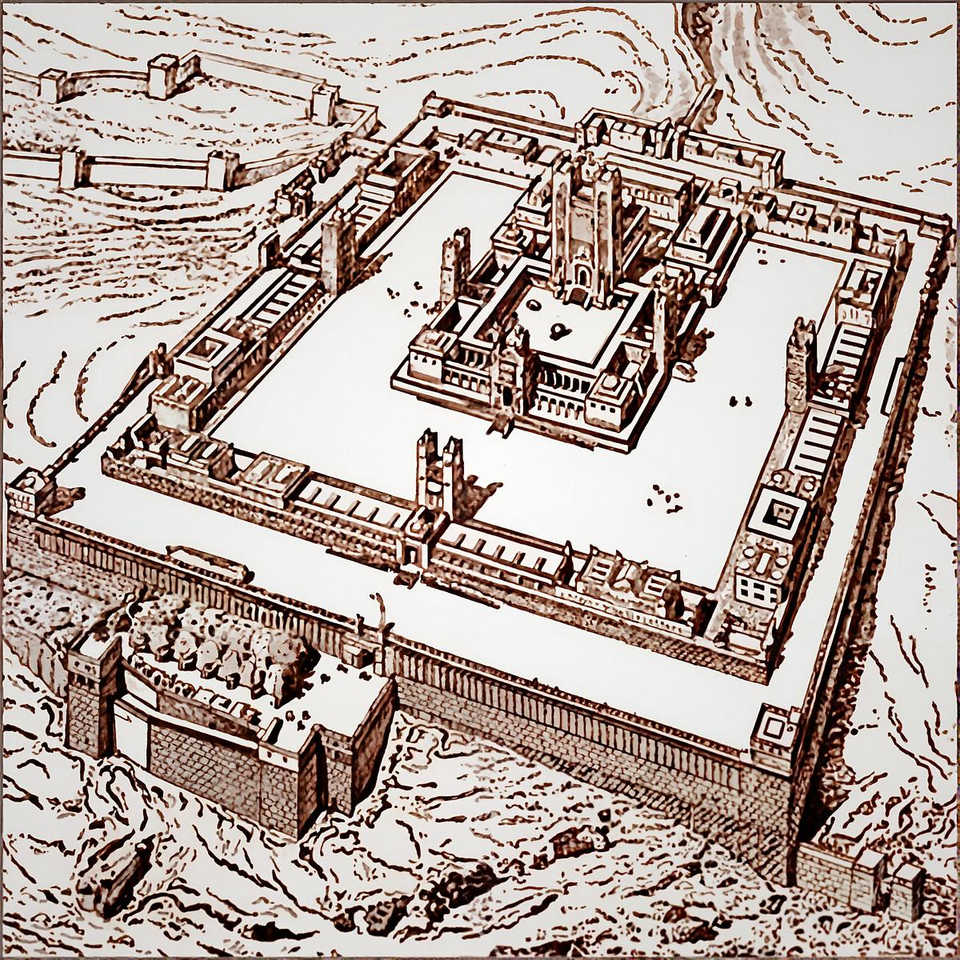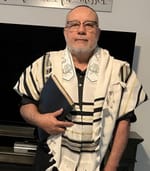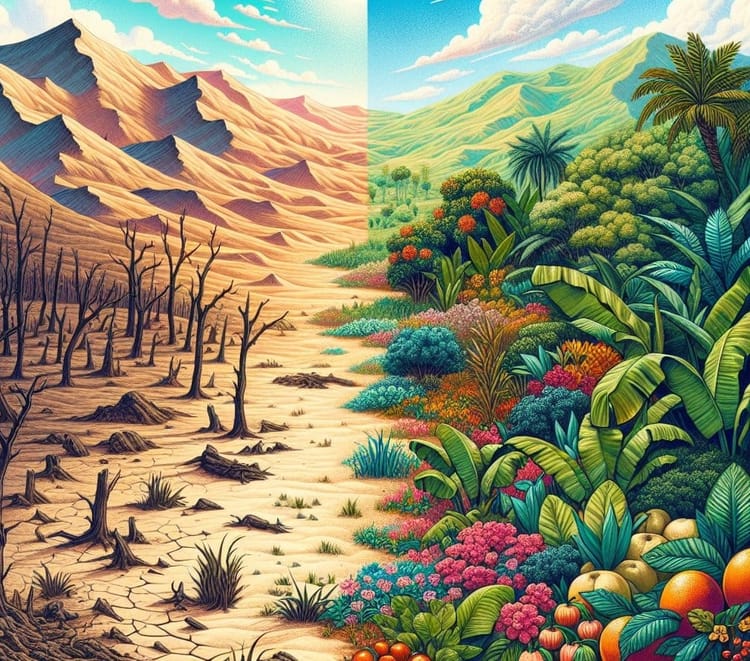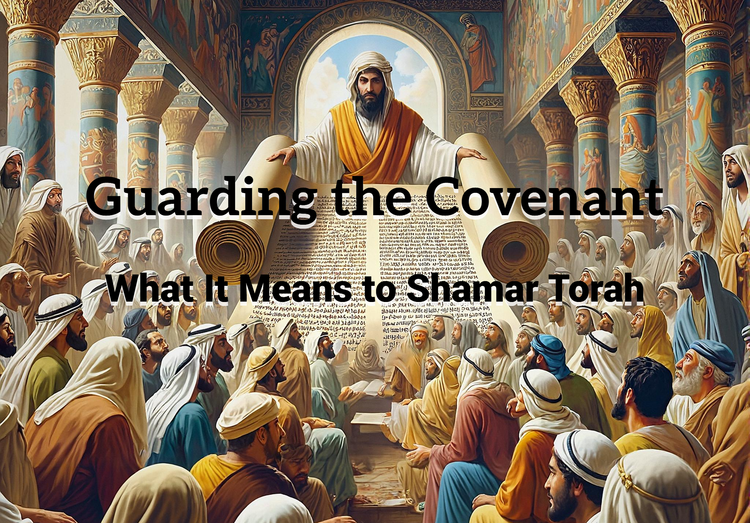The Vision of Yeḥezqel’s Temple

A Prophecy of Restoration and Holiness
Few prophecies in the Tanakh have stirred as much discussion as Yeḥezqel (Ezekiel) 40–48.
In these chapters, the prophet describes a magnificent Beit HaMikdash (Temple) revealed by Y’hovah — complete with precise measurements, rituals, and renewed worship.
Yet, this vision raises profound questions:
- When will this Temple exist?
- Why are there sacrifices if Y’hoshua HaMashiach has already offered the perfect atonement?
- How do these chapters harmonize with the letter to the Hebrews (9:11–14, 24–26; 10:4–14)?
Let us look carefully with the eyes of Mashiach Judaism theology, guided by the Ruach HaKodesh, to discern Y’hovah’s purpose in this holy vision.
The Setting of the Vision
Yeḥezqel received this revelation “in the twenty-fifth year of our exile” (Yeḥezqel [Ezekiel] 40:1, TS2009).
Y’hovah transported the prophet “in visions of Elohim” to the Land of Yisrael and showed him a great structure — a Temple unlike any before it.
This vision came after the destruction of the First Temple and served as a message of hope to the exiles in Bavel:
Y’hovah had not abandoned His covenant with Yisrael. Restoration, holiness, and renewed worship were coming.
The Nature of the Vision
There are three main interpretations among talmidim and scholars:
Literal and Future Temple (Millennial)
Many Messianic and prophetic interpreters believe Yeḥezqel’s Temple describes a future, physical Temple to be built during the reign of Y’hoshua HaMashiach — often called the Millennial Kingdom.
In this view, the Temple functions as a memorial of HaMashiach’s atonement, not a replacement for it.
Symbolic or Spiritual Vision
Others see the Temple as a symbolic vision representing Y’hovah’s presence among His people — fulfilled spiritually through HaMashiach and His body, the community of redeemed talmidim.
Composite or Dual Fulfillment
A balanced Messianic view recognizes both aspects: the vision is prophetic and instructive — portraying both the future restoration of Yisrael and the spiritual reality of Y’hovah dwelling among His people.
The Purpose of the Vision
Y’hovah’s message to Yeḥezqel is clear:
“Son of man, describe the Temple to the house of Yisrael, that they may be ashamed of their sins; and let them measure the pattern.”
— Yeḥezqel (Ezekiel) 43:10, TS2009
The purpose of this vision was not merely architectural — it was moral and spiritual.
By seeing the perfection of Y’hovah’s design, the people would be convicted of their unholiness and long for restoration.
The Temple reveals the holiness of Y’hovah, the order of His worship, and the promise of His dwelling with Yisrael once again.
The Glory Returns
In Yeḥezqel 43:1–5, the prophet witnesses the return of the Kavod Y’hovah — the radiant glory that had departed from the First Temple (see Yeḥezqel 10:18–19).
“And behold, the glory of the Elohim of Yisrael came from the way of the east... and the glory of Y’hovah came into the House by way of the gate which faces toward the east.”
— Yeḥezqel (Ezekiel) 43:2, 4, TS2009
This symbolizes the presence of Y’hovah returning to dwell among His redeemed people.
For talmidim of Y’hoshua, this glory finds its ultimate expression in the indwelling of the Ruach HaKodesh and will be manifest fully when HaMashiach reigns from Yerushalayim.
The Sacrifices — Memorial, Not Atonement
This is often the most difficult section for readers of Hebrews.
How can Yeḥezqel’s Temple have animal sacrifices if Y’hoshua’s offering was once for all?
The answer lies in understanding the purpose of these offerings.
In the prophetic context of the Millennial Kingdom, these are memorial sacrifices — reminders of HaMashiach’s finished work, much like the LORD’s Supper (Se’udat HaAdon) is a remembrance today.
They do not add to or replace the atonement of Y’hoshua.
Hebrews 10:4 declares:
“It is impossible that the blood of bulls and goats should take away sins.”
Y’hoshua alone provided eternal redemption (Hebrews 9:11–14).
Thus, Yeḥezqel’s sacrifices are ceremonial symbols, teaching righteousness, purity, and reverence — much like the Torah sacrifices once pointed forward to the stake (cross); these will look backward to it.
The Torah and Worship Restored
Yeḥezqel’s Temple represents the restoration of divine order in worship.
Y’hovah says:
“This is the Torah of the House: on top of the mountain the entire limit all around shall be most set-apart.”
— Yeḥezqel (Ezekiel) 43:12, TS2009
Every detail — from the altar to the gates — emphasizes holiness.
Y’hovah’s Torah is central once again, not abolished but fulfilled and internalized among His people (Yirmeyahu [Jeremiah] 31:33).
The River of Life
In Yeḥezqel 47:1–12, the prophet sees water flowing from beneath the Temple threshold, becoming a great river that brings healing to the land.
This river represents the outpouring of life from Y’hovah’s presence — echoed in Revelation 22:1–2, where the River of Life flows from the throne of Elohim and of the Lamb.
In both visions, Y’hoshua HaMashiach is the source of this living water (Yochanan [John] 7:38).
The Portion of the Land
Chapters 47–48 describe the re-division of the Land of Yisrael among the tribes.
The borders and allotments remind us that Y’hovah’s covenant promises to Avraham, Yitzhak, and Ya’akov are everlasting.
“This land you shall divide by lot to the tribes of Yisrael for inheritance.”
— Yeḥezqel (Ezekiel) 47:21, TS2009
The restoration of the Land is a testimony to Y’hovah’s faithfulness — that He keeps His Word to Yisrael and to all who are grafted in through Y’hoshua (Romans 11).
The Name of the City
The final verse is profound:
“The name of the city from that day shall be: Y’hovah Shammah — Y’hovah is there.”
— Yeḥezqel (Ezekiel) 48:35, TS2009
This is the ultimate goal of all prophecy — the dwelling of Y’hovah among His people.
From the Garden of Eden to the New Yerushalayim, the story of redemption leads to this climax:
Y’hovah with us, His glory filling all creation through HaMashiach.
Yeḥezqel’s Temple vision is a prophetic masterpiece revealing Y’hovah’s heart for holiness, order, and restoration.
It points both forward to the reign of Y’hoshua HaMashiach on earth and inward to the sanctified heart of every talmid in whom Y’hovah dwells by His Ruach.
The sacrifices, the measurements, the river, and the renewed land all proclaim one truth:
“Behold, the dwelling of Elohim is with men, and He shall dwell with them, and they shall be His people.”
— Ḥazon (Revelation) 21:3, TS2009
On that day, all creation will know that Y’hovah Shammah — Y’hovah is there.
To Y’hovah be the glory, through Y’hoshua HaMashiach, by the Ruach HaKodesh. Amen v’Amen.
By Rabbi Francisco Arbas
📧 franciscoarbas.yisrael@gmail.com
Following His ‘WAY’ — Netzari Mashiach Judaism




Comments ()